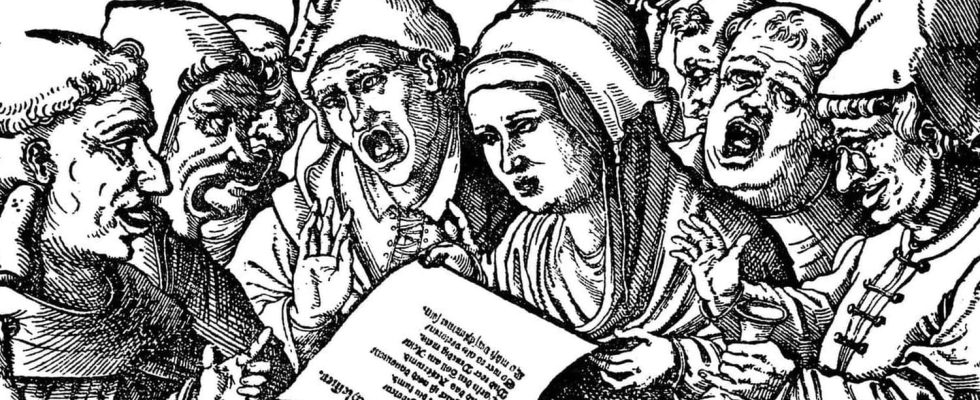The ancients believed that the world was divided into six ages. According to them, they lived in the last of these ages and they foresaw a dark future.
Today we talk about the Middle Ages because we live in the “modern” era. But obviously, around 1000 A.D., no one was saying, “I live in the Middle Ages.” This notion only makes sense from a later point of view, which defines itself as “modern”. For us, the modern era begins with the Renaissance and the return to the heritage of Antiquity. As a result, a division into three periods has been established: there is Antiquity – the “beautiful old Antiquity”, i.e. the period until the end of the Roman Empire; there are the “Modern Times” – from the Renaissance onwards, or even the era of European expansion towards America, Asia and Africa. And the period between Antiquity and Modern Times is simply called the Middle Ages.
In the Middle Ages, naturally, people did not talk about the Middle Ages, nor did they consider themselves living in a modern age. At least in the ecclesiastical world, time was perceived differently, according to the idea of the six or seven ages of the world. This idea comes from Saint Augustine, who lived in the fifth century. Augustine theorized that there would be six ages of a thousand years each from the beginning to the end of the world. According to this theory, the people who lived in what we now call the Middle Ages were in the sixth and final age, heading toward the end of the world and the Last Judgment.
Saint Augustine based himself on a passage from the Second Epistle of Peter, which says that with the Lord “one day is like a thousand years and a thousand years are like one day”. In other words, a thousand years equals one day. The Bible says that God created the world in six days. Following this logic, six days is equivalent to 6,000 years. This duration corresponded well to biblical genealogies, which indicated who was descended from whom and how long each had lived. Going back to Adam, early Christians deduced that 5,000 years had passed since the beginning of the world. Hence the idea: 5,000 years are equivalent to five ages of a thousand years each. This theory contrasts with the Jewish calendar, which places creation in 3761 BC.
The first age lasted from Adam to the Flood. The second from the Flood to Abraham, and so on. The fifth age ended, according to Augustine, with the arrival of Jesus Christ. Thus began the sixth and final age: the Christian era, or “Aetas Christiana”. And at the end of it, the Last Judgment is supposed to take place. But the Last Judgment did not occur, the world continued to turn, and this way of perceiving time was abandoned – until the Renaissance defined this period as the “Middle Ages.”
